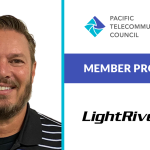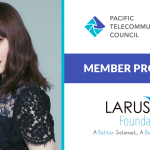

Jason McGee-Abe
Global TMT Lead, 26FIVE

Henry Schuck
Founder & CEO, ZoomInfo
PTC’23 featured participant Henry Schuck, founder and CEO of ZoomInfo spoke with Jason McGee-Abe about the bootstrapped SaaS business that went from a dorm room in Ohio to bringing in private equity funding, transacting 15 M&As, and initially raising USD 1 billion in its IPO amid the COVID-19 pandemic.
For those unfamiliar, what is ZoomInfo and its primary focus?
ZoomInfo is a go-to-market software, data, and insights platform that helps sellers and marketers identify their next best customer, engage with them, and then create automation that constantly fills the top of the funnel and generates new business. Core to that is we cover 105 million businesses, with 220 million business professionals, and provide our customers with deep information so that executives can make seamless and engaging connections.
How was the company founded?
When I went to college, my mom gave me USD 5,000 for my college fund but I ran out of that quickly and quit after the first year. That summer I found a job in Las Vegas and worked there for five years. iProfile was an early entrant in the SaaS space and when I started there, the company was doing around USD 300,000 in revenue. Despite no real investment in the company, when I left it was doing over USD 5 million.
However, I was student body president in my college and felt destined to do something big, so I knew that job wasn’t going to deliver that. I went to law school in Ohio and after my first year, my co-founder and I put USD 25,000 on credit cards and started DiscoverOrg, which operated in the same space without directly competing. Our whole funding was overdrawn credit cards, so we had to build the company profitably.
Our business started off as a data provider, providing contact and company data to businesses. What we realized was once you had that data asset, you had this foundational thing to build on top of and we thought: “What are the other applications that our salespeople customers use that rely on the data that we have that we could build or buy, and integrate our data into?”
So, a good amount of our M&A came from that concept and making acquisitions that drove us into the software and application space and leveraged the data asset to do that. Seven years later, we finally brought in outside funding and the business was doing about USD 30 million in revenue at that point. There aren’t very many software companies today growing at our pace or are as profitable but that shows the unique aspect of our business. Today, the company is five times bigger than it was three years ago in 2019. So, the business is scaling and scaling fast.
Can you describe the relationship you have with your private equity backers?
TA Associates came in [acquiring a 50% stake] in 2014 and was the first money in the business. The following year, we started an M&A strategy by buying the company I worked at in college and business continued to grow. After four years, TA Associates sold part of their holding [30%] to the Carlyle Group in March 2018. Then together, we probably did the most transformational acquisition by acquiring a competitor ZoomInfo, whose brand we eventually took on. To date, we’ve carried out 15 M&A transactions.
Interestingly, our type of business and space was hardly invested in before by private equity, so TA Associates was not only the first money in ZoomInfo but really the first kind of money in sales data and technology. Because of that it gave us this opportunity to be the biggest investors in this category and to try to change the ways companies went to market and found their next customers. So, we got to be in the driver’s seat of innovating the space, which is amazing.
The private equity folks do tend to be more operationally focused and although there was an understanding of the strategic direction we would go in; they weren’t my most trusted strategic advisors with it. They are, however, spectacular on the financial side because when you do acquisitions, you need to either raise equity or raise debt or figure out how to fund it. We’ve always been able to go to them to figure out how to make an acquisition work financially and they’re incredibly valuable there.
Both private equity firms were on my board before we went public in June 2020 and they’re still on my board today. Before we went public, I spoke to them weekly and now it’s less frequent but still regular.
A year before you co-founded DiscoverOrg, Clive Humby coined the phrase: “Data is the new oil.” The analogy is still relevant (if not more so) today but perhaps it’s more accurate to say “Data is the new crude oil” as if it’s left unrefined, it won’t reach its true value. How is ZoomInfo refining its data today and helping organizations?
Every organization has some data on their customers and prospects. The problem with data on companies and people who work at those companies and the long tail of data about them is that it’s always changing. No company looks the same on December 31 as it did on January 1, and a third of the workforce is going to move around, get promoted, or leave their business. There’s a constantly changing universe of data.
If you go to most companies and ask, “How are they managing the change in what their customers look like and who their key buyers are?”, they don’t have a methodology to do that. There’s no infrastructural element to keep that data updated and accurate, and a lot of decisions and analysis about opportunity and threats are based on that data.
For example, they might say, “I have a big contract with a company and my key buyer has left.” What should they do at that moment? Is it an opportunity or a threat? Maybe someone’s been trying to get into an account for the last five years and its chief information officer had blocked them, but now that they’ve been replaced, that’s an opportunity. Someone’s champion leaves a company, that’s an opportunity at the new one but a threat at the old one. There’s no systematic way to keep all that data updated. It goes into your CRM or marketing automation system and then immediately just starts decaying. What ZoomInfo can do with its technology is plug in to those systems of record and start driving insights in those systems, telling you what’s going on in your key accounts, what the shift in personnel is in those accounts, which data centers or telecom companies are in a buying cycle right now, which ones raised funding or hired a new VP of infrastructure. We’re giving insights across 105 million companies to enable companies to be in front of the right companies at the right time. That’s really the refining that ZoomInfo is doing.
How is ZoomInfo pioneering the use of artificial intelligence (AI) and machine learning to solve one of the biggest problems facing businesses: access to reliable data?
We have different sources of data, such as two contributory networks and indexing the web, that comes into a central repository that has built in algorithms, machine learning, and AI to make sense of the data that we’re seeing. If there is conflicting data, we take it and store it and see if any other signals over the next 30 days or 60 days would make us want to change the information. We do this across all the different types of data that we collect, such as what technologies a company uses, what they’re researching on the B2B web, how many locations they have etc. All of this data is coming in and then sense is being made of it through the machine learning and AI engine that sits centrally in everything we do.
How does ZoomInfo work with telecommunications companies?
The business originally focused on helping companies sell into the IT departments of Fortune 1000 businesses. For example, “Who is the CIO?”, “Who are the people underneath the CIO?”. Our first customers were telecom and data center businesses as that was a great hunting ground for them. Today, that’s evolved a little, but their core use case is still needing to understand who the key decision-makers are in key accounts and when they should be engaging with them. They also want to understand what does their corporate infrastructure look like, who do they use from a data center perspective, and how much of their workload is in the cloud? Do they have a relationship with AWS, Google Cloud, or Microsoft Azure? Are they planning on doing a data center relocation? What initiatives do they have planned in the next six to 12 to 18 months? So, we’re delivering that to our data center and telecommunications customers, and then we’re giving them the ability to automate a go-to-market motion around it. When a new CIO comes into one of these accounts, I want to call them, have the sales rep reach out, send a marketing message, send a direct mail, etc. So, every time one of these key things happens at a business, we help to enable that motion in an automated way. It’s about identifying who are the companies, who should be focused on, who are the buyers of those companies, and what’s a key moment to engage with them?
Security is a critical area today for every business in the digital era. How is ZoomInfo fighting cybercriminal activity and safeguarding its own data?
We’ve always been a big target as we’ve had an outsized presence on the web, but we hired our first chief information security officer earlier this year who actually was the chief information officer for Israel. A direct appointee of the prime minister, he’s extremely experienced and we felt it made sense to really up how we think about security internally and externally. We have a team of white-hat security penetration testers who are constantly trying to break our systems, but maybe more interestingly, when you do as much M&A as we do, the company that you’re acquiring are typically less sophisticated than you are so the surface area becomes bigger and more vulnerable when doing those types of acquisitions. So, one of the things that we do before we close any acquisition is go in and run a white-hat test against all of their infrastructure, give them a list of the things that we found that they need to remediate before they come on. So those are just a couple of ways that we’re really leveraging information security in our business.
ZoomInfo is at the forefront of innovation in the SaaS space but what opportunity (or threat) intrigues you the most today, and why?
Historically, we’ve always run as a very profitable business and for 10 years I’ve had to make excuses for that profitable business because the whole focus of investors in software has been around growth at all costs and they didn’t really care if you did it efficiently. Today, that’s very different. That just hasn’t been something that anybody cared about until very recently, so I think that’s a major opportunity for us. It’s probably a meaningful threat to businesses that get caught up in this idea that you should grow and grow at all costs. At the end of the day, you’re supposed to be running a good business and good businesses make money. And I think for a long time, there was a loss of focus on that.
The fundamental shift now of investors trying to find companies that have good unit economics, low customer acquisition costs, grow profitably but in a sustainable and durable way, is going to be a tailwind for some and a headwind for others.
What and who do you attribute your success as a leader to?
I would say my mom instilled a very great work ethic into me. She worked three jobs and was a nurse, so from a young age I had a really great respect for what hard work was required to get somewhere. At elementary school, I had the mindset that if I wanted to become something I just needed to work hard enough and be committed. I don’t think everybody today grows up with that same mindset, but it taught me I can accomplish anything and is an important way to look at the world.
Looking ahead to PTC’23, which you’ll be a featured participant, what will you be discussing and what are you looking to take away?
The topic we set up is about scaling a business from startup to IPO and doing that in an efficient way that is rewarded by the markets. Efficiency is a big part of that, and we’ve been able to do it profitably because we run a very efficient go-to-market motion. So, the idea is to share what we’ve learned and done over the last 15 years to drive down customer acquisition costs, that drives up profitability in your business, which in turn drives up the ability to invest in other parts of your business.
You can find Henry Schuck at PTC’23 on Monday, 16 January 2023 in the Center Stage interview From Bootstrapped to Billions: A Go-to-Market Success Story.








